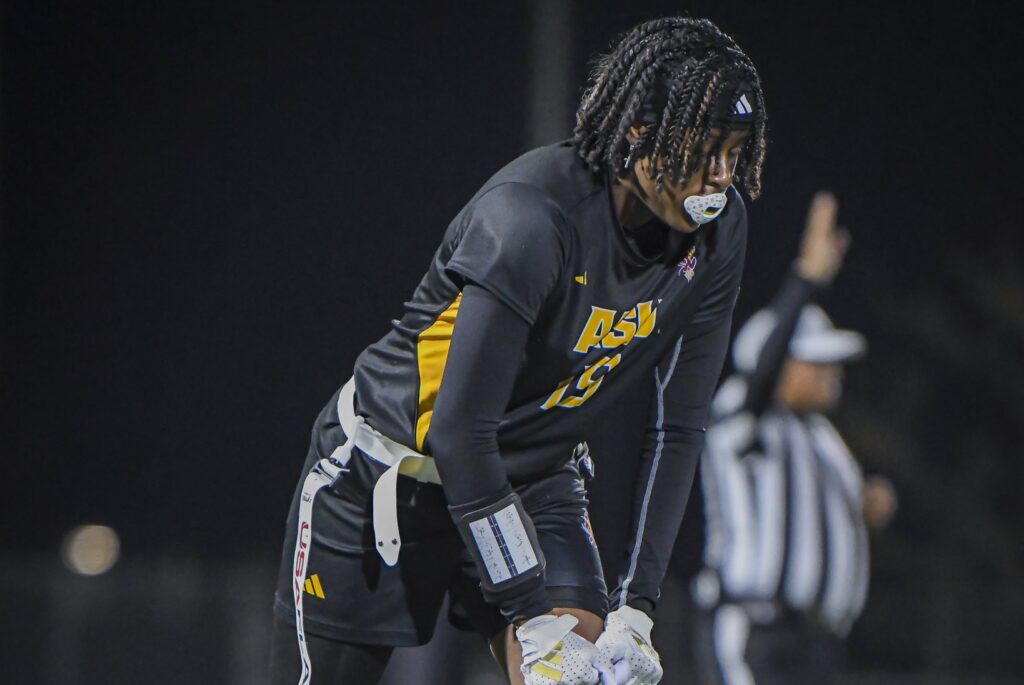Arizona State now has a women’s flag football team, and the school has a student to thank for this.
Sierra Smith, a sophomore at Arizona State, arrived on campus lamenting the harsh reality that her days on the flag football field had likely ended in high school.
“I played at the high school level at Hamilton High School for two years,” Smith said. “When we got to ASU, I was like, ‘Dang, We never got a chance to play at the collegiate level.’”
Smith quickly sprung into action, forming a women’s flag football team at her new school.
Her motivations for creating this new team went beyond just wanting to be able to lace up her cleats and compete again.
She wanted to play her part in the advancement of women’s athletics at all levels and all ages.
Girls flag football is growing rapidly in the Phoenix area at a high-school level, something Smith hoped to capitalize on and contribute to, locally and nationally.
“That was my whole reason for starting this campaign, just to inspire youth and people across the valley and the country to play girl’s flag football,” Smith said.
While Smith’s story is admirable and her determination inspiring, it raises an important question.
Why does the responsibility to create opportunities for women in sports, particularly in a sport growing in interest in the surrounding area, fall on the athletes themselves?
Should this not be a duty that falls on universities?
They are institutions tasked with doing all they can to enhance the student experience, after all.
That is surely why school administrators are paid the big bucks.
It can also clearly be done, as Smith and her teammates accomplished this quickly.
It is not outlandish to expect a school the size of Arizona State to see the spike in interest in local girls’ high school flag football and act accordingly, taking the initiative to create a team for future students who were responsible for this spike.
Yet, despite this realistic expectation, Arizona State did not take the lead, leaving students like Smith to pick up the pieces if they wanted to compete in collegiate athletics.
There is an opportunity for Arizona State, and frankly all universities because this issue is not singular to ASU, to learn from Smith having to form this team.
The administration at Arizona State can be proud of what Smith and her teammates have done but should also reflect on why these athletes had to create the team themselves.
In an ideal world, the future Sierra Smiths of the world will be able to join pre-existing collegiate teams for the sport of their choosing.
That is how it should be.
For now, Sierra Smith can be found on the field with her teammates, a team that is the culmination of the entire group’s hard work to provide opportunities for women in athletics.
“Football has always been deemed as a male-dominated sport, and our goal is to show that we can play too,” Smith said.


